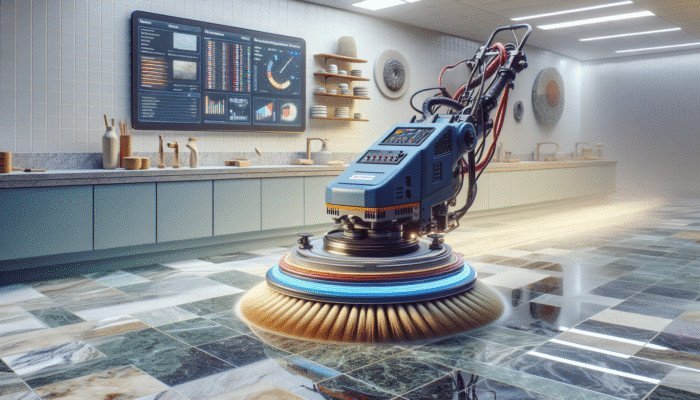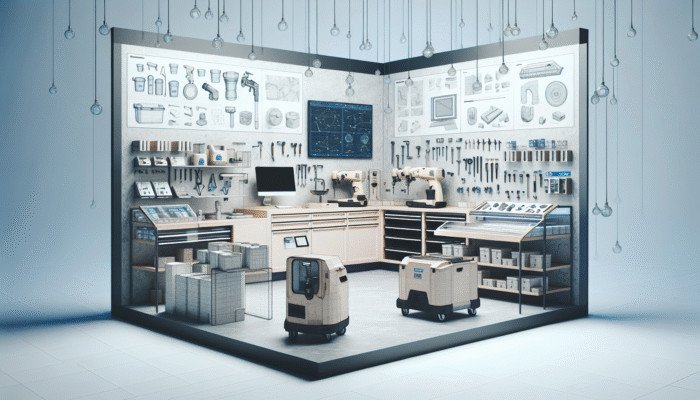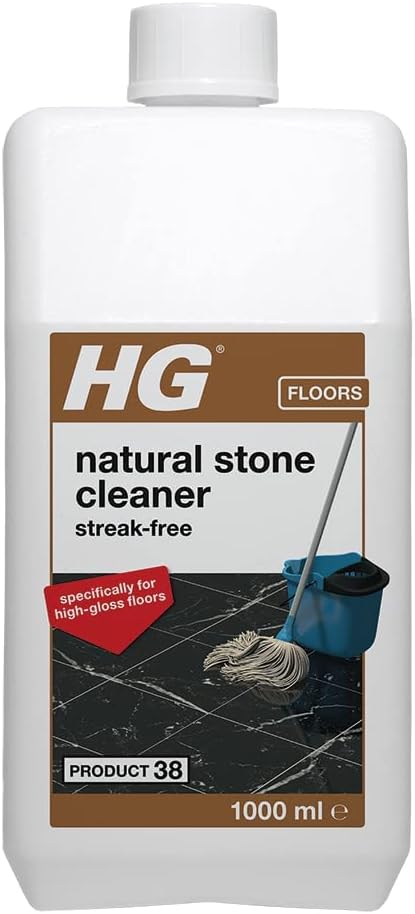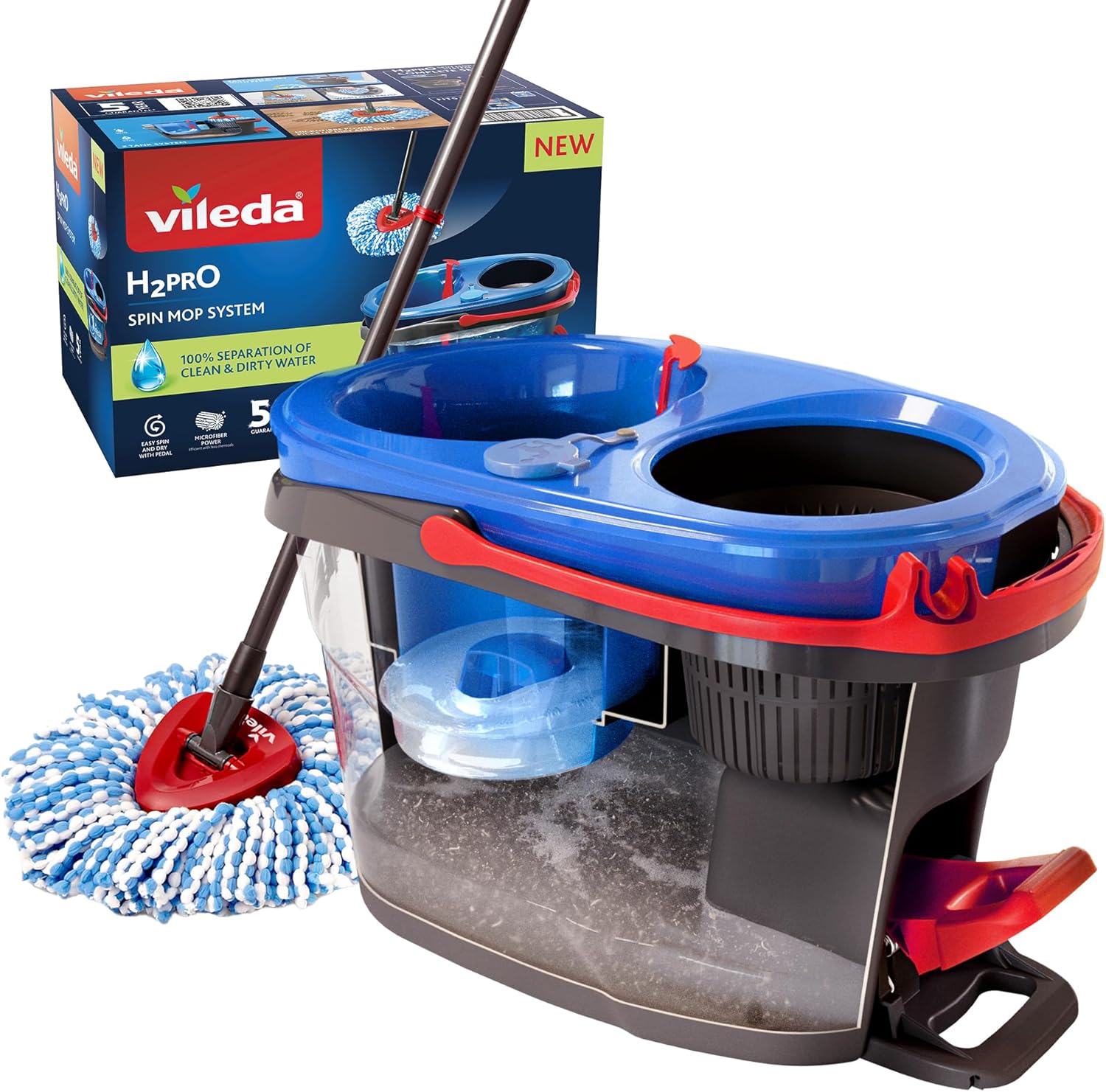Summary of “Essential Tools for Experts in Professional Stone Restoration in the UK”:
- In-Depth Guide: This comprehensive resource serves as a valuable reference for stone restoration professionals within the UK, detailing indispensable tools and effective techniques for optimal results.
- Key Equipment Highlighted:
- Diamond grinding machines are designed for precise levelling and smoothing operations.
- Polishing pads and honing powders are crucial for achieving refined surface finishes.
- Industrial vacuum cleaners and dust extractors are essential for maintaining clean and safe working environments.
- Specialised Tools: This section includes tools specifically for grout cleaning, edge grinding, and variable-speed polishing, all tailored for optimal stone care.
- Sealing and Finishing Techniques: Insights into sealant applicators and sprayers that enhance the durability and aesthetic finish of stone surfaces.
- Insights Specific to the UK: A focus on suppliers, relevant regulations, and environmental considerations pertinent to stone restoration professionals operating in the UK.
- Tips for Maintenance: Best practices for the proper care, transport, and cleaning of restoration equipment to ensure longevity and performance.
- Emphasising Safety: The document underscores the critical importance of personal protective equipment (PPE) and adherence to equipment compliance in professional settings.
Pro Tip: Recommended Products for DIY Stone Floor Cleaning
Discover the Essential Tools Required for Expert Stone Restoration
Maximising the Potential of High-Speed Polishers in Stone Restoration Projects

Stone Restoration Equipment: High-speed polishers are indispensable tools within the realm of professional stone restoration equipment. These machines are specifically designed to rejuvenate and restore the lustrous finishes of various stone surfaces commonly found throughout the UK. When employed in polishing stone, these sophisticated machines utilise robust motors capable of spinning at high velocities, effectively revitalising the shine of materials such as marble, granite, and a multitude of other natural stones. Their exceptional ability to deliver a high-quality finish renders them essential for both seasoned professionals and enthusiastic DIYers aiming to maintain the aesthetic allure of their stone floors and countertops.
In the UK, high-speed polishers are often equipped with a range of pads tailored to various finishes. For instance, softer pads are particularly effective for achieving a high-gloss finish on delicate marble surfaces. In contrast, more abrasive pads are strategically used on tougher stones, such as granite, to eliminate scratches and stains effectively. The versatility of these polishers is vital for both professional restoration services and individual home users, as they facilitate the maintenance of stone surfaces in a variety of settings, ranging from private residences to commercial establishments.
Additionally, polishers come in various sizes and weights, allowing professionals to select the most appropriate equipment for specific tasks. Lightweight models are especially advantageous for intricate work in confined spaces, whereas heavier models are more suitable for extensive restoration projects. This adaptability is crucial within the diverse architectural landscape of the UK, where buildings showcase a wide variety of stone types and finishes, necessitating the use of tailored equipment for achieving optimal restoration results.
Recognising the Vital Role of Heavy-Duty Grinders in Stone Restoration Efforts
Heavy-duty grinders are an essential component of professional stone restoration equipment utilised across the UK. These powerful machines are crucial for smoothing and levelling stone floors, designed to tackle the more demanding challenges associated with stone restoration tasks. With their robust construction and powerful motors, grinders effectively eliminate uneven surfaces, stubborn stains, and other imperfections that detract from the visual appeal of stone flooring.
The application of grinders is commonplace in various properties across the UK, from historic landmarks to modern residential buildings. These machines play a significant role in preparing surfaces for subsequent treatments, ensuring that a flawless finish can be achieved. For example, when addressing a worn stone floor in a Victorian property, a grinder can efficiently strip away layers of old sealant and grime, exposing the fresh stone beneath and setting the stage for polishing or sealing.
Moreover, advancements in technology have led to the creation of diamond grinders, which significantly enhance the effectiveness of these machines. Equipped with diamond-segmented blades, these grinders not only prolong the lifespan of the tools but also offer superior cutting and grinding performance, making them invaluable for restoring high-end stone surfaces to their original splendour.
Understanding the Essential Function of Diamond Pads in Attaining Impeccable Stone Finishes
Diamond pads represent a critical component of professional stone restoration equipment in the UK. These pads feature diamond-impregnated surfaces that deliver exceptional results when polishing and finishing stone surfaces. Available in a variety of grits, these pads enable professionals to select the appropriate level of abrasiveness tailored to the unique requirements of the stone being treated.
For example, coarse pads excel at initial grinding and heavy material removal, while finer pads are specifically designed for delicate finishing touches that restore the stone's natural sheen. This gradient of abrasiveness is particularly beneficial in the UK, where many stone surfaces—such as intricate mosaics and soft limestone—necessitate a bespoke approach to restoration to achieve optimal results.
Furthermore, the durability of diamond pads ensures they can withstand the rigours of professional use, rendering them a cost-effective solution for various stone restoration projects. As a result, many restoration experts favour these pads, valuing their ability to consistently deliver high-quality finishes across a diverse range of stone types.
Leading Brands in the UK Stone Restoration Equipment Market

Klindex UK: A Renowned Leader in Quality Stone Restoration Equipment
Within the UK’s professional stone restoration equipment landscape, Klindex UK stands out as a prominent name in the industry. Known for its unwavering commitment to quality and durability, this brand offers an extensive range of equipment meticulously designed to meet the needs of both professional restorers and discerning homeowners alike.
Klindex UK polishers and grinders are distinguished by their ergonomic designs, which enhance usability and reduce operator fatigue during prolonged use. Additionally, these machines often incorporate advanced features such as variable speed controls and efficient dust extraction systems, making them particularly suitable for the diverse environmental conditions encountered throughout the UK.
Users of Klindex UK’s products consistently praise their reliability and performance, which translates into effective stone restoration outcomes. In residential settings, homeowners prefer their equipment to maintain the aesthetic beauty of their stone surfaces, while commercial users rely on their performance for managing larger-scale restoration projects.
HTC: Pioneering Eco-Friendly Solutions for Stone Restoration
For environmentally conscious professionals, HTC emerges as an ideal partner in pursuing sustainable restoration practices. This brand has established a niche by focusing on eco-friendly stone restoration tools, which are particularly favoured by UK professionals who prioritise sustainability in their operations. Their equipment is designed to minimise environmental impact while maintaining high performance, making them a preferred choice for those working on historic buildings or within environmentally sensitive environments.
HTC's commitment to sustainability is evident through its use of non-toxic materials and energy-efficient manufacturing processes. This dedication appeals to environmentally aware customers and ensures compliance with the increasingly stringent UK regulations regarding environmental protection. For instance, their range of grinders and polishers features advanced technology that reduces noise pollution and dust emissions, making them well-suited for urban environments.
Professionals who use HTC's equipment often report increased satisfaction with their projects, appreciating that they are not only restoring stone but also making a positive contribution to environmental preservation. As a result, this brand has become synonymous with quality and eco-friendliness within the stone restoration community.
Brand C: Providing Versatile Solutions for Stone Restoration Professionals

Numatic International is well-regarded for offering an extensive array of high-quality professional stone restoration equipment, specifically tailored for the UK market. Their comprehensive product line includes a diverse selection of grinders, polishers, and diamond pads, all engineered to meet the specific needs of stone restoration professionals working in varied environments.
A standout feature of Numatic International’s equipment is its adaptability. Their machines are designed for user-friendliness, featuring intuitive controls and ergonomic designs that facilitate operation across various stone types and restoration processes. This versatility is particularly critical in the UK, where restoration projects can vary significantly in scope and complexity.
Additionally, Numatic International places a strong emphasis on customer support, providing comprehensive manuals and training resources to assist users in maximising the potential of their equipment. Many professionals in the UK rely on Numatic International not only for the quality of its products but also for the extensive support network that accompanies them, enhancing the efficiency and success of their restoration projects.
Exploring Diverse Applications of Stone Restoration Techniques Across the UK
Expert Techniques for Marble Restoration in Residential and Commercial Spaces
Marble surfaces are highly esteemed for their elegance and timeless charm, making them a preferred choice in both homes and businesses throughout the UK. However, maintaining the immaculate condition of marble necessitates employing the appropriate techniques and professional stone restoration equipment. The restoration process typically involves multiple stages, including cleaning, grinding, and polishing, with each stage requiring specific tools and techniques.
Initially, pH-neutral cleaners are often recommended for cleaning marble surfaces, as they effectively remove dirt and stains without damaging the stone. Following the cleaning phase, professionals commonly utilise grinders equipped with diamond pads to eliminate surface scratches and imperfections. This step is particularly crucial in high-traffic areas where wear and tear are most prominent, ensuring that the marble retains its aesthetic appeal.
Once the grinding is complete, polishers fitted with fine-grit pads are employed to restore the reflective finish that marble is renowned for. The use of high-quality diamond pads guarantees that the polish achieved is not only visually stunning but also durable. Regular maintenance, including periodic polishing, can significantly prolong the lifespan of marble surfaces, making it a wise investment for property owners across the UK.
Restoration Techniques for Granite Surfaces: Ensuring Longevity and Aesthetic Appeal
Granite, celebrated for its exceptional durability and resilience, is another stone commonly encountered in stone restoration projects throughout the UK. The tools and methods used for maintaining and restoring granite surfaces are crucial for ensuring they retain their beauty and functionality over time. The restoration process typically commences with a thorough cleaning to eliminate any residues or contaminants that may have accumulated on the surface.
Following this initial step, professionals often turn to heavy-duty grinders to level the surface and eradicate deep scratches. The effectiveness of diamond grinding pads in this context cannot be overstated, as they are specifically crafted to handle the inherent hardness of granite, ensuring a smooth finish without unduly wearing down the equipment used.
Finally, the polishing phase uses specialised granite polishers equipped with appropriate pads. This stage enhances the stone's natural colours and patterns, resulting in a stunning visual impact that is highly sought after in both residential and commercial environments. With the right approach and quality stone restoration equipment, granite surfaces can be restored to their original splendour, ensuring they remain a focal point in any space.
Tailored Restoration Approaches for Limestone Surfaces in Historical Contexts
Limestone is a significant architectural feature in numerous historic buildings throughout the UK, prized for its natural beauty and versatility. However, restoring limestone necessitates specialised equipment and techniques due to its softer and more porous nature compared to other stones. The restoration process typically begins with a comprehensive assessment of the stone's condition, followed by cleaning with appropriate, non-invasive products.
Grinders fitted with soft diamond pads are used to address surface damage while preserving the stone's integrity. The unique characteristics of limestone necessitate a gentler approach during the grinding phase to prevent unnecessary erosion, ensuring that the stone retains its historical significance and beauty.
Once the grinding is complete, the polishing stage enhances the stone's natural textures and colours, yielding a rich, warm appearance that is both inviting and elegant. Regular maintenance is crucial to prevent staining and degradation, and investing in high-quality professional stone restoration equipment is essential for property owners seeking to preserve the allure and integrity of their limestone surfaces.
Obtaining Essential Training and Certification for Stone Restoration Professionals in the UK
Enrolling in Accredited Courses for Comprehensive Stone Restoration Training
In the UK, enrolling in accredited courses offering professional training in stone restoration is vital for ensuring individuals possess the necessary skills and knowledge to operate professional stone restoration equipment effectively. Various institutions provide programmes tailored for both newcomers and seasoned professionals seeking to enhance their expertise in the field.
These courses typically encompass essential topics such as the properties of different stone types, safe equipment operation, and best practices for restoration techniques. By participating in accredited courses, attendees gain theoretical knowledge and engage in practical training, enabling them to hone their skills under the guidance of experienced instructors who offer valuable insights and mentorship.
Furthermore, graduates of these programmes often enjoy enhanced employability, as many employers in the UK prefer candidates with recognised qualifications. The credibility that comes with certification from reputable institutions can also inspire client confidence, leading to increased business opportunities for certified professionals in the stone restoration industry.
Practical On-Site Training for Mastering Stone Restoration Techniques
On-site training sessions provided by UK equipment suppliers are invaluable for professionals looking to optimise their use of professional stone restoration equipment. During these sessions, participants typically engage in practical demonstrations, where they can observe the equipment in action and receive personalised instruction on its operation and maintenance.
This type of training is particularly beneficial, as it allows professionals to become familiar with the specific features and capabilities of the tools they will be using. Understanding how to operate and maintain equipment properly can greatly influence the quality of restoration work performed, ensuring that outcomes meet both client expectations and industry standards.
Moreover, on-site training encourages an interactive learning environment, allowing participants to ask questions and discuss best practices and troubleshooting techniques. This hands-on experience is crucial for building confidence and ensuring that professionals are thoroughly prepared for the challenges they may face in the field.
The Advantages of Certification in Enhancing Professional Credibility
Obtaining certification in stone restoration offers numerous advantages for professionals operating in the UK. Firstly, certification is a testament to an individual’s expertise and dedication to the craft, assuring clients of the quality of work they can expect. This recognition can be a deciding factor for potential customers when selecting a restoration service, as they often prefer certified professionals over non-certified counterparts.
Furthermore, certified professionals frequently gain access to exclusive resources, including advanced training opportunities and industry updates. This ongoing professional development enables them to stay current with emerging trends and techniques in stone restoration, ensuring they remain competitive in the marketplace.
In addition to enhancing credibility and knowledge, certification can increase job prospects and potentially lead to higher earnings. Many employers place a high value on certified professionals for their demonstrated commitment to quality and safety in their work, making certification a worthwhile investment for those aiming to advance their careers in the stone restoration industry.
Implementing Effective Maintenance Strategies for Stone Restoration Equipment
Establishing Regular Cleaning Protocols for Optimal Equipment Performance
Regular cleaning of professional stone restoration equipment is crucial for extending its lifespan and ensuring optimal performance. Dust and debris can accumulate on machines, disrupting their operation and potentially leading to damage over time. A systematic cleaning regimen helps mitigate these risks while keeping equipment in peak condition.
For instance, after completing each project, professionals should diligently wipe down polishers and grinders to remove dust and residues from stone surfaces. This practice not only protects the equipment but also contributes to a healthier work environment by reducing airborne particles that could pose health risks.
Additionally, it is advisable to inspect equipment regularly for signs of wear, such as frayed cords or worn-out pads. Addressing these issues promptly can prevent more significant problems in the future, ensuring that equipment remains a reliable asset in the restoration process and contributes effectively to achieving high-quality results.
Ensuring Proper Storage of Restoration Tools for Longevity
Proper storage of professional stone restoration equipment is essential for maintaining its functionality and longevity. After a long day of work, it may be tempting to leave equipment out, but this practice can lead to unnecessary wear and tear, ultimately compromising the tools’ effectiveness.
When not in use, tools should be stored in a dry, temperature-controlled environment to prevent rust and moisture damage. Furthermore, each piece of equipment should be stored according to the manufacturer’s recommendations to ensure protection from physical damage that could hinder performance and usability.
Padded cases or shelves specifically designed for restoration tools can provide additional protection. This organised approach not only prolongs the life of the equipment but also enhances efficiency, as well-maintained tools are easier to locate and utilise for future projects.
Accessing Reliable Repair Services for Stone Restoration Equipment
Access to dependable repair services for professional stone restoration equipment is vital for maintaining operational efficiency. Even the most reliable equipment may require repairs over time, whether due to normal wear and tear or unexpected malfunctions that can occur during usage.
Professionals in the UK should establish relationships with local repair services that specialise in restoration tools. These technicians can provide timely and effective repairs, minimising downtime and ensuring that projects remain on schedule without unnecessary interruptions.
Additionally, many repair services offer maintenance packages, enabling professionals to schedule regular check-ups and maintenance services. This proactive approach can help identify potential issues before they escalate, ensuring that equipment remains in optimal working condition and ultimately benefiting the quality of restoration work.
Implementing Preventive Maintenance Schedules for Equipment Longevity
Scheduling regular check-ups and maintenance is integral to ensuring the optimal performance of professional stone restoration equipment. Preventive maintenance not only extends the life of the tools but also enhances their efficiency, enabling professionals to deliver higher-quality results in their restoration work.
These check-ups typically involve inspecting equipment components, lubricating moving parts, and replacing worn-out accessories such as pads or filters. By addressing these minor issues before they develop into significant problems, professionals can avoid costly repairs and minimise downtime.
Moreover, many manufacturers provide guidelines for maintenance schedules, advising users on how frequently they should service their equipment based on usage levels. This information is invaluable for professionals aiming to maximise the return on their investment in restoration tools, ensuring they remain reliable assets in their business operations.
Adhering to Safety Standards in the UK Stone Restoration Industry
Essential Safety Gear for Stone Restoration Professionals
Engaging in stone restoration work necessitates strict adherence to safety standards, and possessing the appropriate safety equipment is paramount. Essential professional gear includes eye protection, gloves, and respiratory masks, all designed to shield against dust, debris, and harmful chemicals commonly encountered in the industry.
For instance, when operating grinders or polishers, protective eyewear is crucial to guard against flying particles that could cause serious eye injuries. Additionally, high-quality gloves provide a secure grip and protect hands from cuts and abrasions, thereby enhancing the operator’s control over the equipment during use.
Furthermore, respiratory masks are vital when working with potentially hazardous materials or in dusty environments, helping to prevent respiratory issues. By prioritising safety and equipping themselves with the necessary protective gear, stone restoration professionals can effectively mitigate the risks associated with their work, ensuring a safer and more productive working environment.
Understanding Compliance Regulations for Stone Restoration Practices
In the UK, compliance with health and safety regulations is non-negotiable for stone restoration professionals. These regulations establish the responsibilities of employers and employees in maintaining a safe working environment, particularly when operating professional stone restoration equipment.
Professionals must be well-versed in the guidelines established by organisations such as the Health and Safety Executive (HSE), which provide clear directives on safe practices. This includes proper equipment training, adherence to safe operating procedures, and the implementation of thorough risk assessments to identify potential hazards associated with restoration work.
Compliance fosters a safer workplace and protects professionals from potential legal repercussions. By operating within these guidelines, restoration professionals can focus on delivering high-quality work while maintaining safety standards.
The Importance of Safety Training for Stone Restoration Professionals
Mandatory safety training is crucial for professionals who use professional stone restoration equipment in the UK. This training equips individuals with the knowledge and skills necessary to operate equipment safely and effectively, significantly reducing the risk of accidents and injuries in the field.
Training sessions typically encompass various aspects of safety, including the proper handling of tools, understanding the risks associated with specific equipment, and emergency protocols to follow in the event of an accident. By thoroughly engaging in this training, professionals develop the confidence to navigate potential hazards and respond appropriately to emergencies.
Moreover, ongoing safety training remains crucial, as it keeps professionals updated on the latest best practices and technologies in the industry. This commitment to safety not only enhances personal well-being but also cultivates a culture of safety within the workplace, benefiting all team members involved in stone restoration projects.
Conducting Hazard Assessments to Ensure Workplace Safety
Conducting thorough hazard assessments is critical for identifying and mitigating risks associated with stone restoration work in the UK. Professionals are encouraged to systematically evaluate their workspace and operations, identifying potential hazards that could threaten safety.
This assessment typically involves evaluating the condition of the restoration equipment, the workspace’s layout, and the potential risks associated with using specific tools. By identifying these hazards early on, professionals can implement effective measures to minimise risks, such as rearranging workspace layouts or providing additional training to team members.
Furthermore, involving team members in the hazard assessment process fosters a culture of safety, encouraging open communication and collaborative problem-solving. Ultimately, a proactive approach to hazard assessment helps ensure that stone restoration projects proceed safely and efficiently, protecting both workers and the integrity of the restored stone.
Establishing Emergency Protocols for Effective Response in Crisis Situations
Establishing clear emergency protocols is vital for responding effectively to accidents and emergencies that may arise during stone restoration projects in the UK. Professionals should develop and communicate a comprehensive plan outlining the necessary steps to take in various emergency scenarios, such as equipment malfunctions, injuries, or environmental hazards.
This plan should include immediate actions to protect personnel, such as shutting down equipment, administering first aid, or evacuating the area if necessary. Additionally, readily accessible first aid kits and contact information for emergency services are crucial for ensuring a prompt response to emergencies and minimising potential harm.
Regular drills and training on these emergency protocols can enhance preparedness, allowing team members to react swiftly and confidently in high-pressure situations. By prioritising emergency preparedness, professionals can safeguard their well-being and maintain a safe working environment during stone restoration projects.
Highlighting Successful Case Studies in UK Stone Restoration Projects
Revitalising Historic Buildings Through Professional Stone Restoration Equipment
The application of professional stone restoration equipment has played a pivotal role in restoring historic sites across the UK, preserving the rich heritage and architectural integrity of these significant buildings. A notable example is the restoration of the iconic St. Paul’s Cathedral in London, where experts employed advanced grinding and polishing techniques to revive the beauty of the stone façade.
This project utilised a combination of diamond grinders and polishers to address decades of wear and atmospheric damage. The restoration team meticulously assessed the stone’s condition and applied targeted restoration methods to preserve the building’s original character and historical significance.
Such projects underscore the importance of utilising specialised equipment not only for aesthetic enhancements but also for ensuring the structural integrity of historic buildings. The successful restoration of these sites preserves cultural heritage while significantly enhancing tourism, contributing positively to local economies across the UK.
Transforming Commercial Properties with Advanced Stone Restoration Techniques
The use of professional stone restoration equipment in commercial buildings has transformed many properties into showcases of stunning craftsmanship. For instance, a high-end retail store in Manchester underwent a comprehensive stone floor restoration, during which experts employed heavy-duty grinders to eliminate surface damage and prepare the floor for polishing.
This project exemplified the effectiveness of advanced restoration equipment in achieving exceptional results within a high-traffic environment. By revitalising the stone floors, the store significantly enhanced its overall appeal, attracting more customers and positively impacting sales metrics.
Moreover, the restoration process was executed with minimal disruption to business operations, showcasing the efficiency of modern restoration techniques and equipment. Such successful commercial projects serve as testaments to the capabilities of professional equipment in the stone restoration industry.
Enhancing Residential Spaces: A Stone Restoration Success Story
In residential settings, the use of professional stone restoration equipment has become increasingly popular among homeowners seeking to maintain or elevate the beauty of their stone surfaces. One notable case involved a family residence in the Cotswolds, where worn marble countertops were restored to their original splendour.
The restoration team employed a systematic approach, commencing with comprehensive cleaning and grinding to eliminate scratches and imperfections. Finally, high-speed polishers achieved a flawless finish, transforming the kitchen into a stunning focal point that enhanced the home’s aesthetic appeal.
As homeowners increasingly invest in the upkeep of their properties, the demand for professional stone restoration has surged, creating ample opportunities for specialists in the field. This trend underscores the importance of utilising advanced equipment to achieve results that not only meet but exceed homeowners’ expectations, leading to satisfied clients and repeat business.
Public Infrastructure Restoration: Preserving Community Landmarks
Public infrastructure projects often require professional stone restoration equipment to improve the longevity and aesthetic appeal of structures such as bridges and monuments. A prime example is the restoration of the historic London Bridge, where experts employed advanced techniques to rejuvenate the stonework while preserving its historical significance.
The restoration project involved extensive cleaning using eco-friendly products, as well as grinding and polishing to restore the stone’s surface to its former glory. This not only enhanced the bridge’s visual appeal but also ensured its structural integrity for years to come, thereby safeguarding a vital community landmark.
The success of such public infrastructure projects highlights the necessity of employing skilled professionals and utilising high-quality equipment. These efforts not only preserve historical landmarks but also contribute to community pride and tourism, reinforcing the importance of stone restoration in public spaces.
Addressing Common Questions About Stone Restoration
What constitutes professional stone restoration equipment?
Professional stone restoration equipment encompasses specialised tools and machines designed for repairing, maintaining, and enhancing the appearance of stone surfaces. These include polishers, grinders, and diamond pads tailored for various restoration tasks.
How can I determine the most suitable stone restoration equipment for my specific needs?
Selecting the right equipment involves considering the type of stone being restored, the specific restoration tasks required, and the project size, as well as the recommended features from reputable brands that ensure optimal performance.
Is it feasible to use stone restoration equipment at home?
Yes, many stone restoration tools are suitable for DIY use. However, to achieve effective and safe results, it is crucial to thoroughly understand the equipment’s operation and safety guidelines.
How often is it necessary to maintain stone restoration equipment?
Regular maintenance should be conducted after each use, in addition to scheduled check-ups, to ensure that all equipment remains in optimal working condition and to prevent potential performance issues.
Are there environmentally friendly options available for stone restoration equipment?
Several brands offer eco-friendly stone restoration tools designed to minimise environmental impact while maintaining high performance and effectiveness during restoration tasks.
What safety equipment is recommended for stone restoration work?
Essential safety equipment includes protective eyewear, gloves, dust masks, and hearing protection to ensure a safe working environment when operating stone restoration machinery.
What training opportunities exist for stone restoration professionals?
The UK offers accredited courses and on-site training sessions to equip professionals with the necessary skills and knowledge for effective stone restoration practices.
What is the typical duration of a stone restoration project?
The duration of a stone restoration project varies depending on the size and condition of the area being restored. It typically ranges from a few hours to several days, depending on the complexity of the work involved.
Can I undertake stone surface restoration independently?
While DIY restoration is feasible, it is often advisable to hire professionals for substantial projects to ensure the use of appropriate techniques and equipment, thereby achieving optimal results.
What advantages does professional stone restoration offer?
Professional stone restoration enhances the lifespan of surfaces and can significantly increase property value, making it a worthwhile investment for both homeowners and businesses.
The Article Essential Tools for Experts in Professional Stone Restoration in the UK was first found on https://london-stone.co.uk





